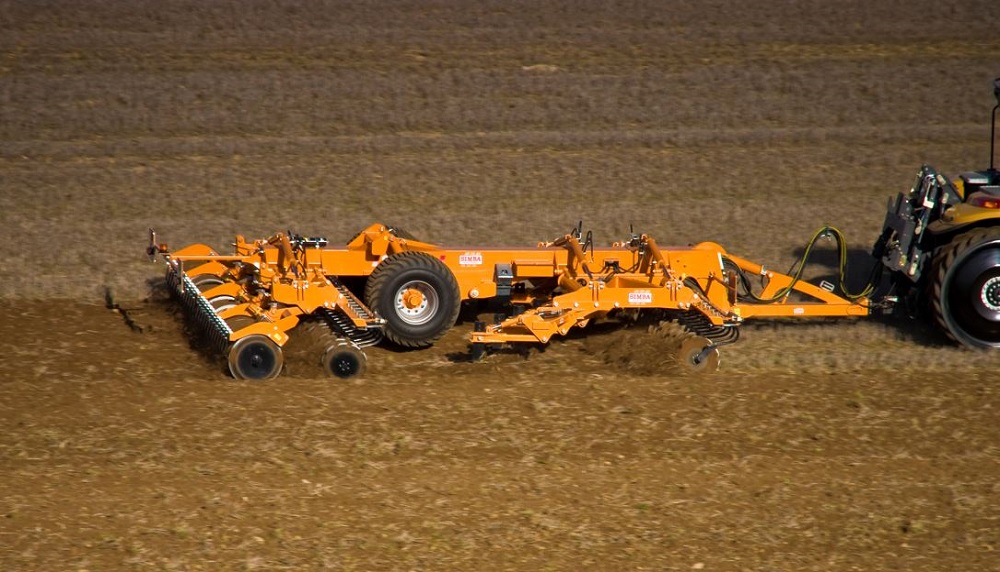- Home
- Knowledge library
- Shallow and deep non-inversion tillage methods on arable land
Shallow and deep non-inversion tillage methods on arable land
Deep and shallow non-inversion tillage methods provide a low-cost alternative to ploughing. They create acceptable conditions at depth while allowing weathered surface tilth to remain nearer the seedbed zone.
Deep (20–35 cm) non-inversion tillage
This technique gained popularity in the 1980s and 1990s as a low-cost alternative to ploughing.
It was used most frequently on medium and heavy soils in a cereals, pulses and oilseeds rotation.
The advent of herbicide-resistant grass weeds and close rotations of cereals and oilseeds, with minimal or no spring cropping, meant detailed changes to such systems have been necessary.
For effective deep non-inversion, consider:
- Identifying problem depths and working just below them
- Minimising surface mixing and manage residues, if appropriate, for the following crop
- Using deeper soil structuring actions that protect the natural soil structure, when required
- That actions must cause low surface disturbance, produce subtle vertical fissures and not full rearrangement of the profile at depth (careful selection of loosening tine geometry can help)
- That the technique can be effective in a broader rotation, including root or brassica crops, where regular ploughing is not preferred
- That some machines combine closer-spaced discs for shallower surface residue mixing, have low surface disturbance loosening legs and a rear consolidating press roller (these are used where soil loosening is a regular requirement – as dictated by soil type, climate, or cropping, for example)
- Where a looser finish is needed, depth control can be achieved by the roller, or combined with transportation wheels
Pros and cons of deep non-inversion tillage
Pros:
- Retains the natural soil profile (surface tilth and subsurface structure)
- Removes subsurface compaction
- Enhances biological breakdown of residual herbicides
- Mineralises nutrients for availability in the following crop
- Pressing as part of the operation gives a weatherproof finish
- Often lower cost than ploughing, i.e. if all operations are accounted for
- Combined deep and shallow operations in one pass
Cons:
- Relatively high soil movement can compromise structure resilience
- Mixes weed seeds through the profile (uncontrolled emergence can result)
- Some risk of mineralised nutrients being lost to the atmosphere
- Can leave a firm surface prone to slumping
- High cost compared to less intrusive systems
- Less flexibility if deep tillage is not required on some areas
- Usually reliant on rotations and/or chemicals for weed control
Shallow (5–10 cm) non-inversion tillage
Most often used where cereals, pulses and oilseeds are in a rotation.
The technique requires the use of controlled-traffic farming (CTF) and/or low-ground-pressure technologies to avoid deeper soil damage.
The technique is suitable for self-structuring soil types. It can help control slugs and forms stale seedbeds (where it is preferred not to leave weed seeds and volunteers on the surface to germinate).
For effective shallow non-inversion tillage:
- Effective residue management is essential
- Good consolidation after cultivations is vital to manage slugs
- Where there is a need for deep soil restructuring, these actions can be by a separate, targeted operation
- The shallow working machine can use tines and/or discs, with depth controlled by the rear roller and, possibly, gauge wheels
- Discs:
- Have a high rake angle and are most effective in drier conditions and where residues can be high in volume or not finely chopped
- With a wave format give a significant width of cut at very shallow depth and enable full width shallow cultivation
- Tines:
- Have a lower rake angle than discs and have a wider moisture window of effective operation with less smearing risk
- If spaced adequately, can cope with larger volumes of residues
- Used in multiple rows (four or more) with narrow tips can move the surface to a shallow depth
- That are wider-spaced, in fewer ranks with sweep or duck-foot type tips, result in a greater risk of smearing or shearing across the working depth in damper situations, however, they enable the use of a simpler, closer-coupled or shorter design machines
Pros and cons of shallow non-inversion tillage
Pros:
- Retains the natural soil profile (surface tilth and subsurface structure)
- Leaves residues on or near the surface shallow mixed (stale seedbed)
- Associated control of slugs by shallow tillage and consolidation
- Pressing as part of the operation gives a weatherproof finish
- Low cost, high output
- Removes compaction, if combined with low-disturbance loosening
Cons:
- Needs a well-structured subsurface to prevent barriers
- Disc-based option good in residues: tine-based action can block, which requires adequate tine clearance
- Disc-based option can smear in damp conditions
- The above can imply compromise, depending on conditions and season
- Needs a drill capable of operating in high residues
- If combined with loosening, more passes are required
- Often reliant on rotations and/or chemicals for weed control
 Wright Resolutions Limited
Wright Resolutions Limited

